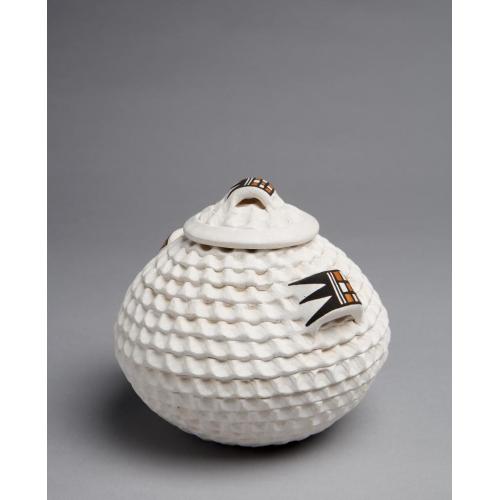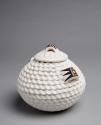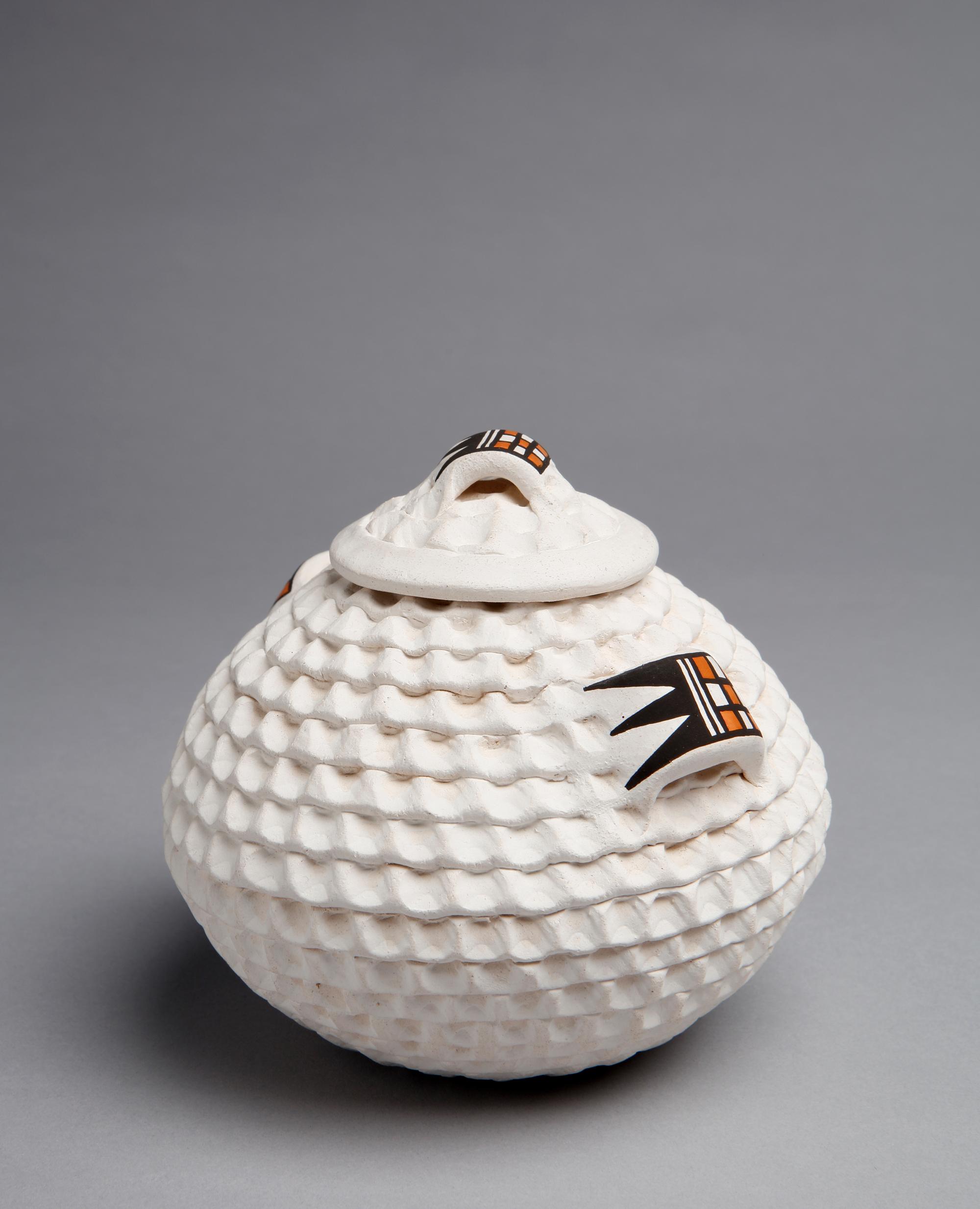
Photograph by Addison Doty. Copyright 2015 School for Advanced Research.
Seed jar w/ lid
Date: 1984
Artist or Maker: Stella Shutiva (1939 - 1997)
Dimensions:
Dimensions: 10.5 × 13 cm (4 1/8 × 5 1/8 in.)
Weight: 0.4 kg (0.88 lb.)
Medium: clay | paints
Credit Line: Gift of Betty and Luke Vortman, 2010.
Place Made:
Valencia County, New Mexico, Southwest, United States, North America
Object Number: SAR.2010-2-35AB
Not on view
A. Jar features two small handles (one on either side of upper third of piece). Handles feature identical pattern of white/orange checkered pattern with three triangular designs. Pattern on each handle is in opposite orientation to the other. Two centimeter opening on top of bowl where lid sits.
B. Lid. Top of lid features handle with same pattern as the handles on the jar.
Tribal Collection Review RemarksAccording to the participants in the Acoma collection review visit May 11-13, 2016 (Events Record “Collection Review: Acoma Pueblo Review 6”): This is not a bowl but a seed jar form. The artist, Stella Shutiva, is the daughter of Jessie Garcia. Stella is deceased but her daughters continue to make pottery. It was noted by the participants that this method, corrugated, takes a lot of time and patience to complete.
According to the participants in the Acoma collection review visit February 26-27, 2019 (Events Record “Collection Review: Acoma Pueblo Review 12”): Seed jars are used for storing items like seeds, vegetables, and fruits, or smaller items such as beans, plants and pine nuts. They were often sealed to preserve what they were storing. Seed jar forms are still being made and used today at Acoma. They are characterized by having a flatter shoulder area coming to a circular opening at the center. Like all forms being produced today, they are produced and painted with both traditional natural and commercial materials. Older seed jar forms tend to have a lower half that looks similar to a water jar or bowl shape. More recent seed jar forms tend to be spherical or saucer like in shape and medium to small in size.
In Collection(s)
The Indian Arts Research Center, in collaboration with Native American community scholars, strives to present accurate collections records. Records may be updated as new information becomes available and is reviewed with the Native American community having cultural affinity to particular items. Please write to iarc@sarsf.org if you have questions or concerns related to the documentation.










